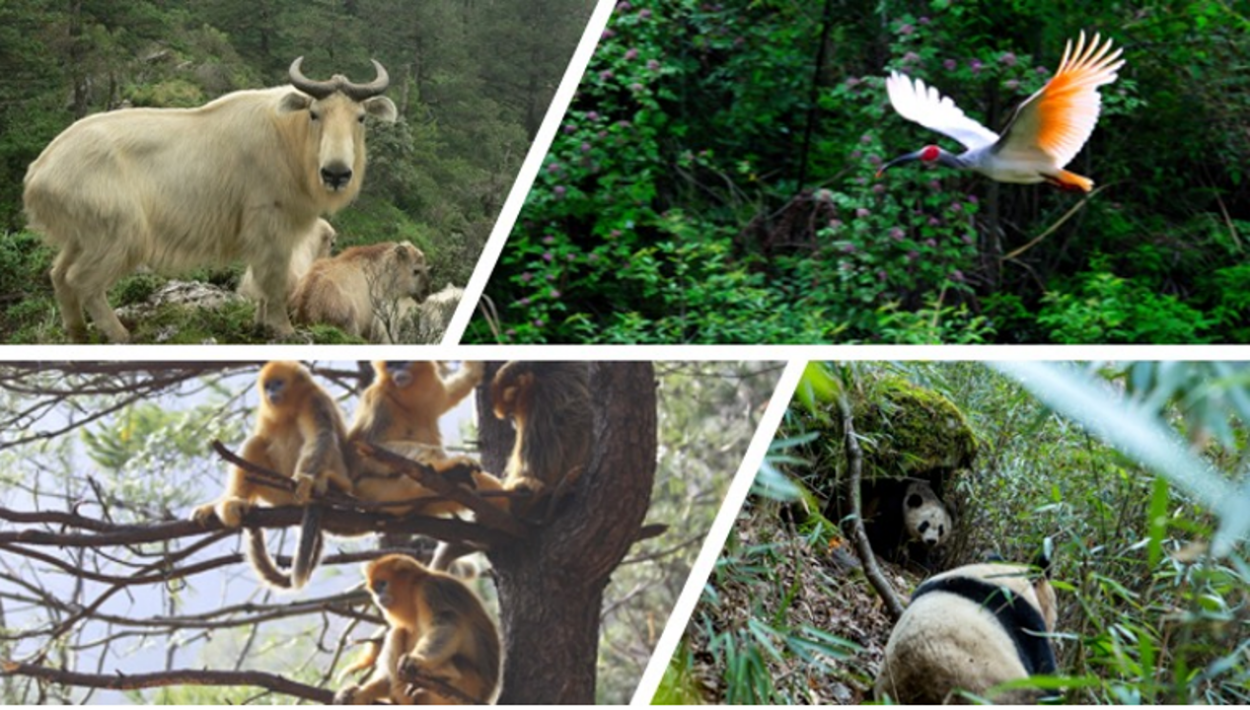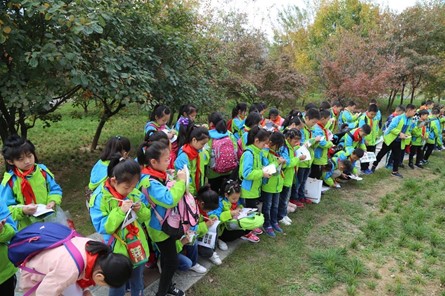

18/09/2023
The Qinling Mountains in the People’s Republic of China (PRC) is a global biodiversity hotspot and one of the country’s most critical ecological function zones that supports many endangered, rare and endemic plants and animals. More than 60% of the estimated 15.7 million people who live in the mountains rely on farming and agricultural production. The high level of land-use pressure in the area and nature reserves created an urgent need to conserve Qinling’s ecosystem.
A project co-financed by the Asian Development Bank (ADB) and the Global Environment Facility (GEF) introduced market-oriented measures to enhance the environmental management while promoting sustainable livelihoods for local communities.
Context
Located about 45 kilometers (km) southwest of Xi’an-the capital city of Shaanxi Province, the Qinling Mountains has high levels of endemism. It is home to about 20% of the PRC’s wild giant panda population, and the only known wild population of the crested ibis-one of the world’s rarest birds. The water resources from the mountain range are integral to the watersheds of the Yangtze and Yellow rivers. About 70% of all vegetation types in the country can be found in this range. Poverty incidence in the area is high-about 37% of the total population-due to limited profitable and sustainable income generation opportunities. Tourism is being developed but with modest results.
Challenges
Heavy reliance on agriculture and competing land uses, particularly in the hilly areas of Qinling, have caused significant environmental, land, and biodiversity degradation. The land-use pressure also brought ecological conservation into conflict with economic development efforts of local communities.

The number of wild crested ibis in the Qinling Mountains increased by 52% in 2019 from 2010 because of improved ecosystem management
Previous donor- and Government-funded projects intended to address land degradation and related issues have supported rural livelihoods and land management in some areas but did not lead to sustainable environmental and human resource benefits once project funding ceased.
Solutions
The Shaanxi Qinling Biodiversity Conservation and Demonstration Project introduced a market-based approach that integrates biodiversity conservation with sustainable revenue generation and land and conservation management. The approach involves measures that provide incentives for local communities to participate in biodiversity conservation by creating income opportunities from ecotourism businesses promoted under the project. Ecosystem service provision is aligned with the interests of individuals who comprise the market to reduce the dependency on unsustainable mechanisms.
Promote participatory biodiversity management and sustainable livelihood in the mountainous area
The Project established the Qinling National Botanical Garden (QNBG) - the first national-level botanical garden in the PRC, initiated jointly by the Shaanxi Provincial Government, State Forestry Administration, and Chinese Academy of Sciences. About 4,000 ha of state forestry lands were placed under its management.
Certificates for forestry conservation and other practices for more than 6,000 ha were awarded to individual households. The Project also supported the development of species management programs for four globally threatened animal species - the giant panda, the golden monkey, the golden takin, and the crested ibis. The QNBG built or upgraded community infrastructure, including 18 km of roads along the Tianyu River; more than 120 km of mountain paths; and village facilities supporting home-based ecotourism, such as solar lighting stands, water supply, and ecological toilets for 160 households. The Project promoted small income-generating businesses, such as the sale of local fruits and other goods. Local communities implemented conservation agriculture on about 35 ha and ecological forestry rehabilitation on about 70 ha with support from the QNBG. Ecotourism business and conservation programs provided alternative but sustainable livelihoods for local communities, which eventually lessened pressures on the lands and biodiversity.
Strengthen biodiversity conservation in the plains area
Covering a total area of about 63,900 hectares (ha), the Project strengthened the ecosystem management in the Qinling Mountains, increased rural incomes, and reduced poverty. The Project also rehabilitated the Shaanxi Animal Rescue Center (SARC) following international standards and good practices for botanical gardens and wildlife conservation. In addition to their conservation functions, the QNBG and SARC provide state-of-the-art ecotourism products and services. Their revenues are reinvested for sustainable financing and conservation of the broader mountainous area.
About 260 ha of botanical gardens were established at QNBG, including 22 specialized gardens and associated public education facilities, such as a public education center, a herbarium, and two outdoor education camps. Designated as a national and provincial nature education base, the QNBG was visited by over 80,000 students from 2017 to 2019. Research facilities such as laboratory, animal hospital, public education center, and tourist information center were installed at SARC. These also include the breeding and exhibition areas for endangered animals.
Enhance institutions and capacities
Through the GEF grant, the project supported the development of an integrated ecosystem management strategy and action plan, including policy recommendations for the establishment of a national park system (a comprehensive nature and ecosystem management regime being promoted by the central government) in the Qinling Mountains. A species monitoring system was established under SARC, including a field-based monitoring patrol station. Ecological baseline monitoring and a database were also created for the QNBG. Moreover, the Project provided training programs and offered job exchange opportunities for technical conservation staff and implemented a replication and conservation awareness-raising program.
Results
Improved biodiversity conservation and livelihoods
The systematic management of over 10,000 ha of forestlands in Qinling has helped reduced land degradation and soil erosion. Mainstreaming the management of globally threatened animal species into Government conservation programs has increased the population of the four endangered wildlife species from 2010 to 2019.
About 1.1 million ecotourists visited the project area in 2019; Rural incomes have increased by 140% in 2019 from 2010. Households in the mountainous area have been lifted from poverty by 2019; Project-related activities generated more than 1,500 jobs. Over 300 jobs were created directly by QNBG and SARC operations. The rest are through small-scale ecotourism enterprises within local communities, such as home-stay ecotourism enterprises that are in operation since 2016.

In the project area, the number of golden takins increased by 150%, crested ibis by 52%, golden monkeys by 71%, and giant pandas by 27%
Enhanced ecosystem management and institutional capacity
The project supported policies that promote long-term ecosystem management, habitat management and action plans, and updates on provincial regulations for Qinling Ecological and Environmental Management. Through the project’s initiative, the Provincial Government prioritized the national park system for the Qinling Mountains. The plan for the Qinling National Park has already passed an expert panel review in October 2020. Science-based capacity development for local agencies has also strengthened the management conservation, baseline database and monitoring, species management plans, and scientific courses for public education. Around 300 staff were trained on conservation and habitat management through on-the-job training at professional institutes such as the Royal Botanic Gardens, Kew and the Durrell Institute of Conservation and Ecology in the United Kingdom and the Chicago Botanic Garden in the United States.

The QNBG has become a major ecotourism destination and a major public education center for school kids
Lessons
Firstly, integrating market-oriented interventions has helped generate revenues from ecotourism in the demonstration area and through the conservation of natural ecosystems. Innovative regulations, enhanced institutions and capacities, and strengthened enforcement mechanisms are crucial for market-driven environmental management systems.
Secondly, Government support is necessary when integrating local community livelihoods with conservation efforts.
Thirdly, the integrated environmental management strategy and action plan served as a critical scientific basis for government policymaking to improve ecosystem management of the Qinling Mountains through the establishment of a national park system.
Fourthly, the Project’s designed interventions for institutional capacity and policy development can be replicated within and outside the PRC.
Nam Việt (Source: Asian Development Bank)
(Source: The article was published on the Environment Magazine by English No. II/2023)
References
Asian Development Bank (ADB). 2020. Completion Report: Shaanxi Qinling Biodiversity Conservation and Demonstration Project. Manila.
ADB. 2008. Market-Based Approaches for Managing the Asian Environment: A Review. Manila.
Shaanxi Development and Reform Commission and Shaanxi Finance Department. 2018. The Integrated Ecosystem Management of the Qinling Mountains. Beijing.
The State Council. 2011. National Principal Function Zoning Plan. Beijing.